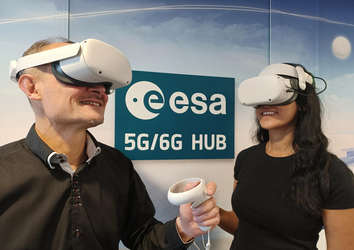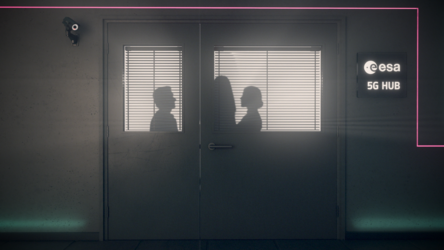ESA tests multi-orbit connectivity
Engineers have communicated via video link using connectivity delivered by 5G terrestrial networks and a combination of satellites in different orbits, as part of an experiment led by ESA’s 5G/6G Hub.
The test linked telecommunications research facilities in the UK, the Netherlands and France.
Such multi-orbit connections are a crucial facet of next-generation communications, improving network capacity, coverage and resilience.
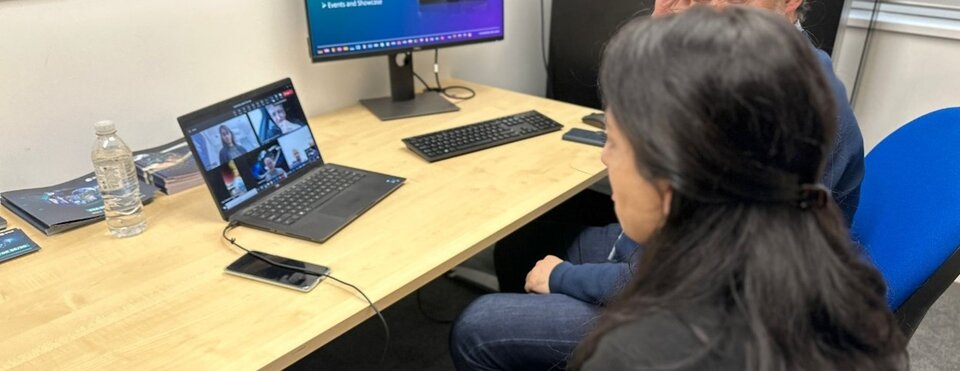
The orbits of telecommunications satellites are carefully planned to fulfil their specific mission requirements and provide the best possible service.
Satellites in low Earth orbit have an altitude of up to 2 000 km and provide high-speed internet connectivity for countless applications – from real-time communications to the internet of things.
They are typically arranged in large constellations of hundreds or even thousands of individual spacecraft that can provide global coverage.
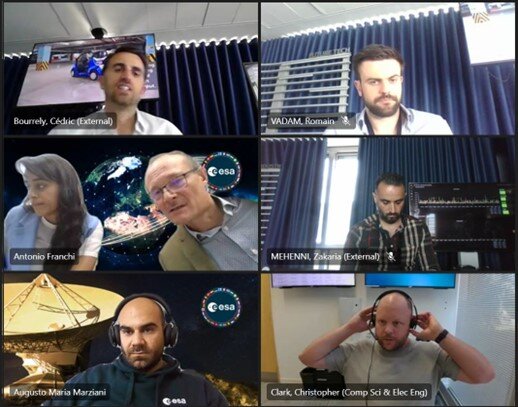
Satellites in geostationary orbit can be found at an altitude of around 36 000 km and this high vantage point means each mission can provide coverage to large parts of Earth’s surface.
Geostationary satellites can be used to transfer large data volumes and are employed in applications like television broadcasting or the delivery of Earth observation data.
By using a combination of these different orbits as well as terrestrial infrastructure, network operators can provide connectivity for a range of environments and applications while ensuring that networks remain operational in the face of disruptions.
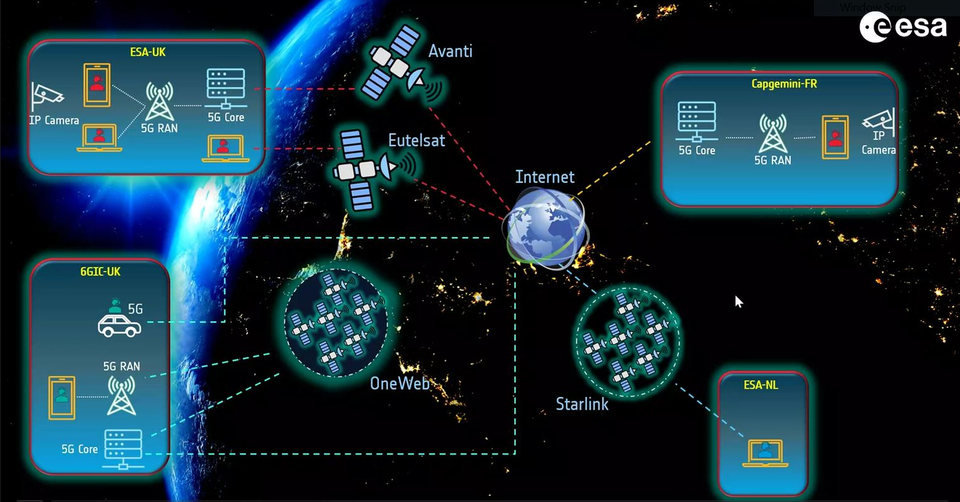
To test this concept, an experiment was completed between ESA’s flagship 5G/6G Hub in the UK, the soon-to-open ESA 5G/6G Hub in the Netherlands, the 5G/6G Innovation Centre of the University of Surrey in the UK, and the 5G lab of information technology specialist Capgemini in Paris.
At ESA’s 5G/6G Hub in the UK, the call was connected over the hub’s private terrestrial 5G network and two communications satellites occupying a geostationary orbit.
ESA’s forthcoming 5G/6G Hub in the Netherlands was linked to the video conference via a constellation of low Earth orbit satellites.
At the University of Surrey, the call was connected over ground-based 5G and a low Earth orbit constellation.
Capgemini dialled in from devices directly connected to its private stand alone 5G network.
During the experiment, the call passed through four different satellite networks and three different ground-based networks, with an excellent connection being maintained throughout.
The test formed part of ESA’s ongoing efforts to accelerate the 5G digital transformation of society by facilitating the convergence of satellite and terrestrial communications networks.
Antonio Franchi, Head of ESA’s 5G/6G Programme, said: “Combining connectivity from different orbits with terrestrial infrastructure is vital to ensure resilient and reliable communications.
“Representing the first time we have connected using multiple orbits from our 5G/6G Hub, this experiment is an important step in our mission to explore and realise the enormous potential of space-enabled communications networks.”



